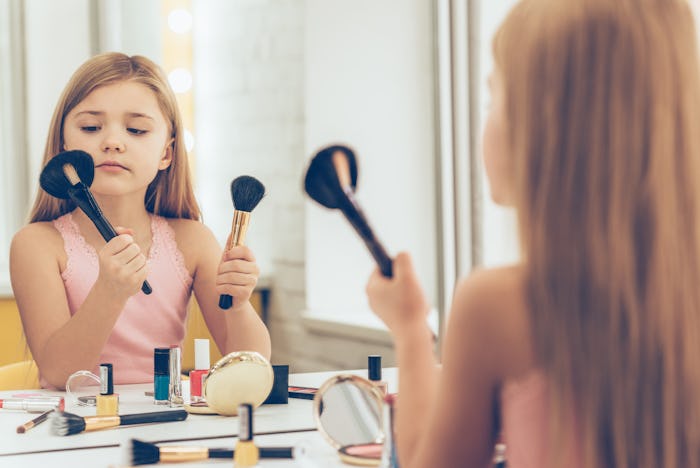News
Your Kid's Self-Image Will Be Affected By The Body Types They See, Study Says
For many people, particularly women, learning to accept — and even love — their body is a long, hard journey that may never be completed. After all, they have to contend with messages in the media of the "ideal" body type and how to achieve it. Enough research exists dissecting why it hurts people, especially children, to push one shape as the "right" body. But recently, British scientists have shown how, exactly, looking at other body types affects your self-image for better or worse. And, in the end, their research further proves why certain advertising can be damaging — and dangerous.
A new study published Wednesday in the journal Royal Society Open Source found that women who look at images of bodies either lighter or heavier than their own will view themselves differently, according to TODAY. In particular, researchers ran two experiments where 90 young women considered to have "normal" bodies based on an (inherently flawed) BMI scale viewed images of three body types: Under average weight, average weight, and over average weight. What they discovered is that, whether or not participants had a high level of body dissatisfaction, they were still more critical of their own bodies after seeing photographs of underweight women, who they labelled as "skinny," TODAY reported.
The British researchers had a series of images of women who fell in the "normal" weight range on the BMI scale, and manipulated those photos to make those models appear smaller or larger, according to MedicalXpress. Negative self-image increased among participants when they saw the pictures of the "skinny" models, the study's findings show, but not so when they viewed images of women who had a similar or heavier body type than their own, MedicalXpress reported.
Lead researcher and study author Dr. Helen Bould, a psychiatrist at Oxford University, told TODAY:
We found that women who had been shown the larger images saw their own bodies as smaller and were happier with their own bodies.
This is not the first time research has shown how the media can influence a person's perception of the "ideal" body type. A 2017 study published in bioRxiv found that, after viewing images of thin or plus-size fashion models people living in rural Nicaragua who had little to no media access formed an opinion of the "ideal" female body. Participants who viewed photos of thinner models created an "ideal" type that was smaller, while those who viewed images of plus-size models formed an "ideal" type that was larger, according to the study.
This goes to show that, when advertisers push a thinner body as the "ideal" body, it can have devastating consequences, especially for young girls. A Dove Global Girls Beauty and Confidence report published last year found that most girls with poor body image and self-esteem are more likely to skip meals, less likely to visit the doctor, and are more likely to be socially isolated, according to The Guardian. And another study published earlier this month by the University of South Wales found that the more time women spent on social media, the more they hated their own bodies, and had body image issues.
But there's a lot more to unpack with the Royal Society Open Source study. The findings don't only confirm that pushing a thin body as the "ideal" body can have damaging effects on a person's relationship with their bodies. They also show that promoting thinner bodies as the "right" bodies teaches people to devalue and demoralize larger ones, whether that means 10 or 80 pounds over the "normal" body range on the BMI scale.
Whether or not a person wants to change their body in any way is their own choice. But the Royal Society Open Source study goes to show why it's important for advertisers and the media to include a diverse range of body types. Sure, people can change what they see on social media, and opt to follow more body positive accounts, as Bould suggested to Today. But self-editing your social media use does nothing to tackle the problem with all of the images you can't control.
